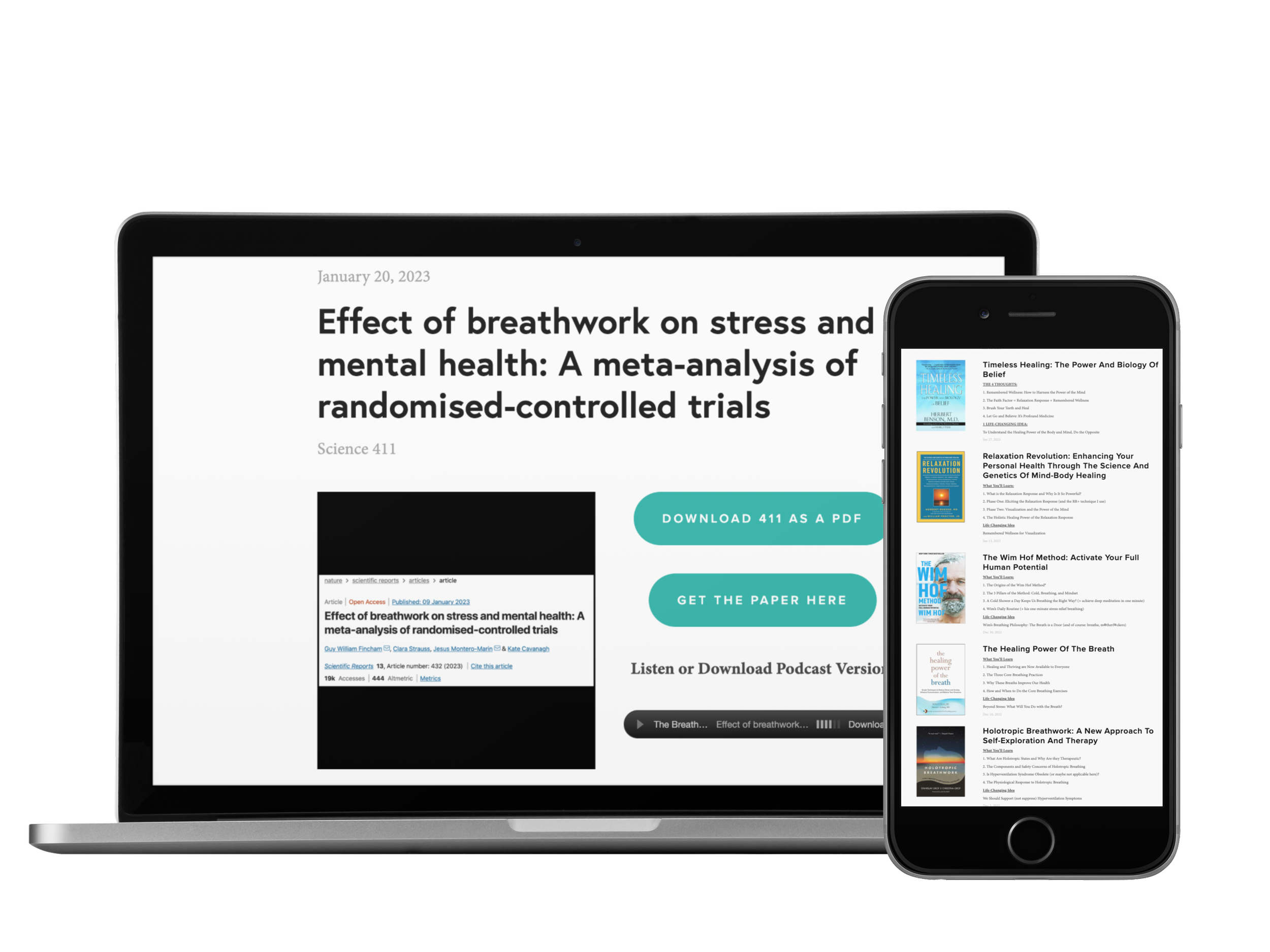Listen Instead of Reading
If you enjoy listening, you can subscribe to the audio version on Spotify, Apple Podcasts, and Audible so you don’t even have to look at the email 😊
A New Three-Component Protocol for Reducing Stress
A reminder that I’m leading a 4-week course starting May 7th called Breathing for Better Mental and Emotional Health.
Learn more about the course and enroll here.
The course is centered around a super simple yet extremely powerful protocol combining breathing, mindfulness, and remembered wellness.
As a 411 subscriber, you get a special 55% discount until April 23 using EARLYBIRD55.
You can also share the discount with any friends or family you think will benefit from the course 🙏
4 THOUGHTS
1. Stored Power: A Pretty Incredible Benefit of Slow Breathing
When you regularly practice slow breathing, you store its power away as potential energy in the form of vagal tone. It’s kind of like a bank account for slow breathing.
You then unconsciously draw from it throughout the day.
It might show up as a micro-moment of joy with the gas station attendant. Or randomly laughing with your spouse. Or having more patience with road construction. And on and on.
Thus, slow breathing has not only instant benefits, but also long-term physical and mental ones stored in vagal tone. Pretty incredible.
2. The Most Effective Stress Remedy
“[V]oluntary control of respiration patterns (breath control) is perhaps the oldest stress reduction technique known. It has been used for thousands of years to reduce anxiety and to promote a generalized state of relaxation.”
This was from a chapter in a book called A Clinical Guide to the Treatment of the Human Stress Response.
It’s always amazing to see the power of the breath acknowledged in academic settings, but it was particularly neat to see in a book on the stress response.
Make sure you take advantage of the great gift we’ve been given—breath control—this week 🙏
3. Useful Links: Resistance Breathing Device + Airheads Breathwork Masterclass
Resistance Breathing:
Last week, I shared the Airofit breathing device. A reader responded and said this one is really good, plus it’s cheaper: Breather Fit.
Airheads Masterclass
A friend informed me of this Airheads Masterclass, which looks awesome. They’ve assembled quite an impressive list of rockstars…
***
P.S. Although I don’t know him IRL, I’m a huge fan of one of the hosts’ (one of the “Airheads,” Tom Granger) work with music and breathing. So, just wanna give that music a plug here.
4. A One-Breath Meditation: I’ve Never Seen This One Before
“This is a wonderful day. I’ve never seen this one before.”
- Maya Angelou
We can use a play on that quote as a one-breath meditation you can say silently in your head anytime, anywhere:
“This is a wonderful breath. I’ve never seen this one before.”
1 Quote
“[A]s long as you are breathing, there is more right with you than there is wrong, no matter how ill or how hopeless you may feel.””
1 Answer
Category: Breathing and the Brain
Answer: One way breathing may positively (or negatively) affect our emotions is through its influence on this brain region.
…
(Cue the Jeopardy! music.)
…
Question: What is the amygdala?
In good breath,
Nick Heath, T1D, PhD
“Breathing is the compound interest of health & wellness.”
* An asterisk by a quote indicates that I listened to this book on Audible. Therefore, the quotation might not be correct, but is my best attempt at reproducing the punctuation based on the narrator’s pace, tone, and pauses.
Sign Up For The Breathing 411
Each Monday, I curate and synthesize information from scientific journals, books, articles, and podcasts to share 4 thoughts, 1 quote, and 1 answer (like "Jeopardy!") related to breathing. It’s a fun way to learn something new each week.



